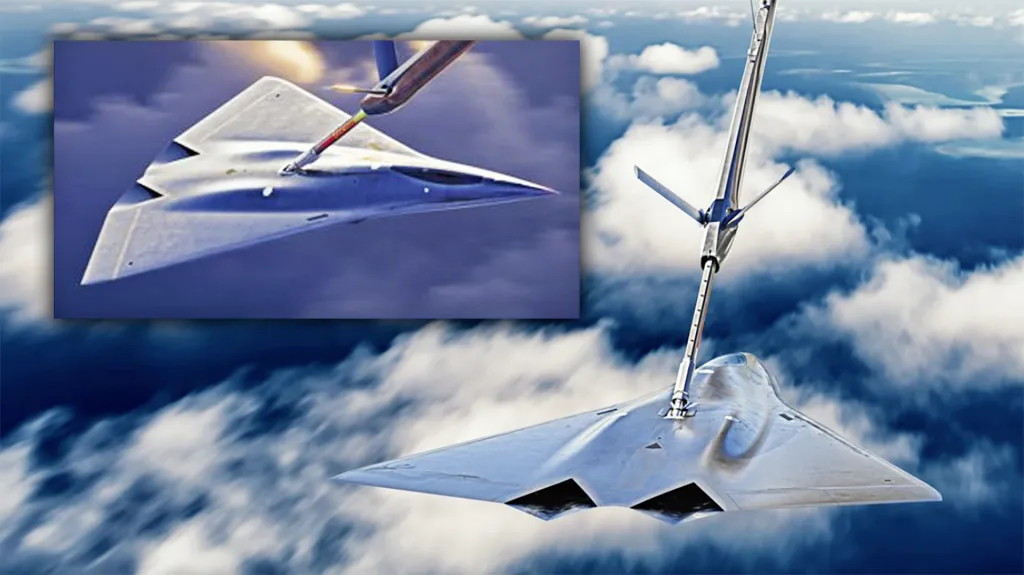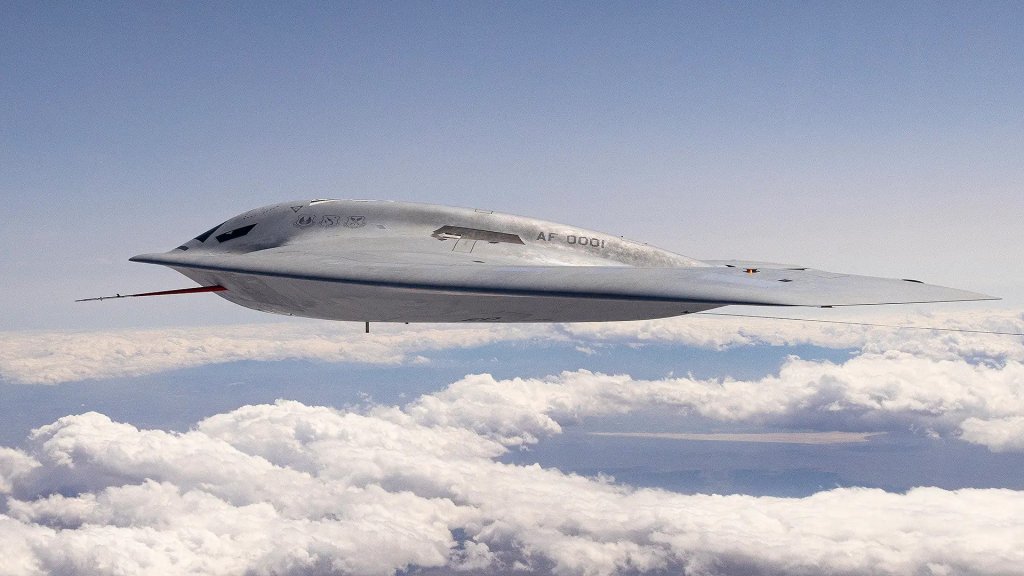Secretary of the Air Force Frank Kendall says questions about the future of a new sixth-generation stealth combat jet under development as part of the Next Generation Air Dominance (NGAD) initiative are being prompted, in part, by larger “affordability problems.” This includes the nearly doubling of the estimated cost of the LGM-35A Sentinel intercontinental ballistic missile program, which is now pegged at just shy of $141 billion. The service is in the midst of taking a deep look at what it wants out of the NGAD aircraft and Kendall has left open the possibility that it might not even necessarily be crewed design in the end.
Secretary Kendall drew the connection between plans for the NGAD combat jet and the need to pay for the Sentinel program, among others, at a media roundtable this past weekend. He also spoke more generally about the service’s review of its requirements for the sixth-generation stealth aircraft at that time, as well as in a separate interview with Breaking Defense‘s Valerie Insinna and Michael Marrow that was published yesterday.

“We’re going to take a hard look at NGAD,” Kendall said at the recent round table. “But the family of systems, which includes a crewed platform and CCAs [Collaborative Combat Aircraft drones], and weapon systems, and communications, and offboard support… [including from] space, is still very much the concept we’re pursuing.”
That being said, “for any major program, the key decision point is… when you commit to doing engineering, manufacturing, and development… That’s when you really up the investment that you’re making,” Kendall added. “Once you make that commitment, you should have a lot of confidence that you’ve got the right design, the right concept, the right requirements, and a program that’s structured for success.”
“We’re at that point pretty much on NGAD right now. So we’re doing what I think would be prudent for any program… take a hard look at whether we’ve got the right design concept, whether it’s affordable, etc,” he continued. “So that’s essentially what we’re doing.”

A central issue is that “the Air Force is confronting some significant affordability problems. We haven’t talked about Sentinel yet, but there’s a very large increase in Sentinel… we also have some other programs that are very high-priority that we need to fund,” the Secretary explained. “There are some big [budget] problems in the out years.”
The Pentagon recently made a formal decision to push ahead with Sentinel after the program’s cost 81 percent estimated growth triggered a legal requirement to cancel it unless certain criteria were met. Part of that process, which you more about here, included certifying that the new intercontinental ballistic missiles are essential to U.S. national security, something Kendall does not dispute.
Kendall said this past weekend that the review of the NGAD combat jet effort now is focused on ensuring the service is on the “right path” before making any major contractual decisions. Air Force Gen. Kenneth Wilsbach, head of Air Combat Command, said earlier this month that he expected his service to pick a winning design before the end of the year, but the program’s schedule seems increasingly uncertain. Wilsbach also said at that time that the Air Force has no formal plans to replace the F-22 Raptor stealth fighter, despite previous statements that the NGAD jets would supplant those aircraft.
Boeing and Lockheed Martin are understood to be currently facing off to win the NGAD contract. Northrop Grumman voluntarily withdrew from the running last year, ostensibly to focus on other potential business opportunities.

“We’re having conversations right now about what to do and how to move forward,” Kendall said separately in his recent interview with Breaking Defense. “What [Gen. Wilsbach] said is not the last word on that.”
He also left open the possibility of significant changes to the core requirements for the NGAD combat jet program.
“I’m confident there’s going to be a sixth-generation fighter,” he told Breaking Defense. “I’m reasonably confident that it’s going to be crewed.”
The War Zone has long posited that the NGAD combat jet is likely to at least be pilot-optional and that it could be the last clean-sheet crewed tactical combat aircraft the Air Force ever buys. It is worth noting here that the forthcoming B-21 Raider stealth bombers will be optionally crewed, as well.

An entirely uncrewed combat air vehicle (UCAV) would not need any of the systems required to support a pilot, which, in turn, would allow for major design changes and help trim costs. It could unlock other advantages in performance, as well. You can read more about the potential capabilities that a true UCAV could offer in this past War Zone feature.
“Before we make the commitment that we’re close to making [on the NGAD combat jet], we want to make sure we get the right design concept,” Kendall also said this past weekend. “NGAD was conceived before a number of things happened, before threat became so severe, before CCAs were introduced into the equation, and before we got some of the issues of affordability that we’re currently facing.”
The “threat” here has been interpreted primarily as a reference to the expanding scale and scope of Chinese military capabilities, which are the current primary drivers behind policy, acquisition, and other planning processes across the U.S. military.

Prior comments from the Air Force Secretary have indicated a willingness to consider sacrificing certain capabilities on the future NGAD combat jets to help drive the price tag down, as well. Each one of these aircraft is currently projected to have a unit cost three times that of a stealthy F-35 Joint Strike Fighter, or close to $250 million based on publicly available data.
Kendall’s linking of Sentinel’s woes to the future of NGAD combat jet, and the serious issues the Air Force is looking at budget-wise over the next five years or so, further raise questions about what else the service might need to cut across the board going forward. NGAD has been billed as a critical priority itself.
“This is a problem that’s been visible for quite a long time. We’re recapitalizing the entire [nuclear deterrent] triad basically all at once,” Kendall said in response to a question about whether it would be useful to create a separate dedicated funding stream for Sentinel, potentially outside of the Air Force’s immediate budget. A similar mechanism exists now for the Navy’s Columbia class ballistic missile submarine program, which has its own cost and schedule concerns, called the National Sea-Based Deterrence Fund.
“The problem with that is at the end of the day, it’s still [a] national security defense part of the budget, and you can increase it and put a different label on it, but it’s still a big increase in defense spending,” the Air Force Secretary added. “So however we do it is the same net impact on the federal budget. So we can change the labels… that doesn’t change the fact that you still have to find the money. So I’m not opposed to this idea, but I don’t think it fundamentally solves our problem.”
The War Zone has highlighted serious questions about the sustainability of U.S. nuclear modernization efforts in the past. Estimates have put the total cost to modernize the triad – consisting of silo-based ICBMs, nuclear ballistic missile submarines, and nuclear-capable long-range bombers – as well as other nuclear weapons programs and supporting efforts, at $1.7 trillion.

Kendall’s recent remarks also highlight that the Air Force is unlikely to be alone in facing these budgetary realities in the coming years. The Navy is looking at the prospect of a serious cut to its own sixth-generation Next Generation Fighter program, more commonly known as F/A-XX, though the immediate drivers in that case are not entirely clear. The Navy had already moved to pump the brakes on F/A-XX, at least in the next fiscal year, in part to help meet other budgetary demands.
It remains to be seen now how the NGAD combat jet program will evolve, including potentially into a UCAV or something else, in the face of Sentinel’s ballooning costs and other budget pressures on the horizon.
Contact the author: joe@twz.com
